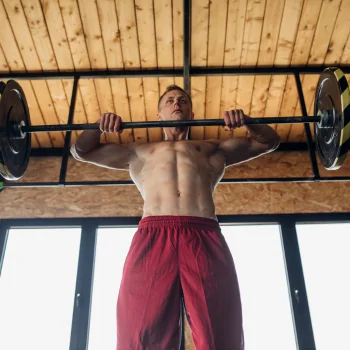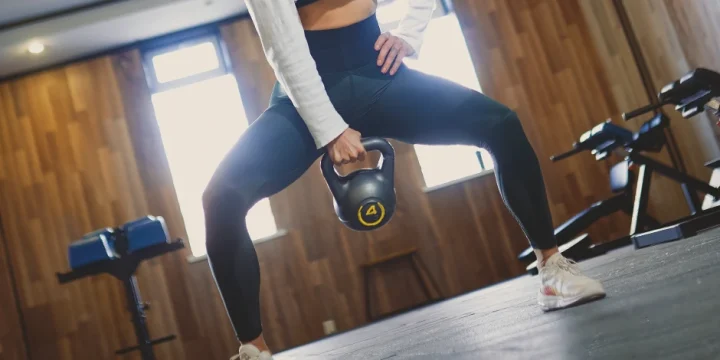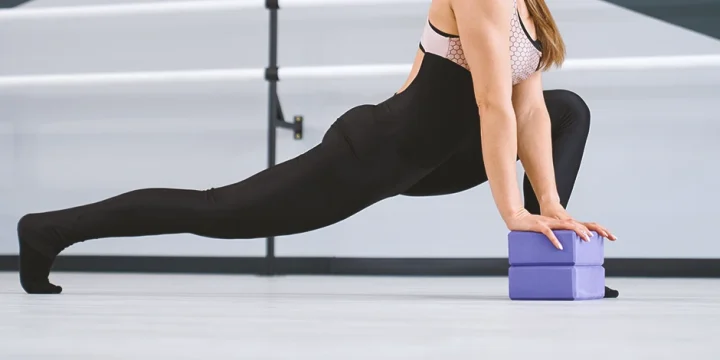The upright row is a popular exercise that primarily targets the muscles of the shoulders, specifically the deltoids and traps.
However, due to its potential to cause shoulder impingement or discomfort for some individuals, it's important to find upright row alternative exercises that can provide similar benefits without the same risks.
As a personal trainer, I always seek the best alternatives to help my clients achieve their muscle-building goals.
Through years of experience and research, I will introduce you to a few alternative exercises that target similar muscle groups as the upright rows, allowing you to diversify your shoulder workout routine while minimizing the potential for discomfort or injury.
Quick Summary
- Upright row alternatives include the unilateral dumbbell snatch, the jerk, the cable face pull, the barbell high pull, and the dumbbell lateral raise.
- The unilateral dumbbell snatch is highlighted as an effective full-body exercise, engaging both upper and lower body muscles and serving as a comprehensive alternative to the upright row.
- The National Institute of Health notes that the upright row can lead to shoulder impingement, especially in individuals with pre-existing shoulder issues.
- In my view, while upright rows have their benefits, alternatives are recommended to prevent shoulder pain and achieve balanced muscle development.
Best Upright Row Alternatives

1. Unilateral Dumbbell Snatch
As a trainer, I find the unilateral dumbbell snatch to be an exceptionally effective exercise, focusing on one side of the body at a time.
This exercise serves as an excellent alternative to the dumbbell upright row. It engages not only the upper body muscles but also the lower body, providing comprehensive training of multiple muscle groups and enhancing overall body power.
Here's how to perform the unilateral dumbbell snatch:
- Start by gripping a dumbbell and placing it horizontally on the floor.
- Position your feet on either side of the dumbbell, approximately shoulder-width apart, or in your preferred squat stance.
- Squat down while maintaining an upright chest and grasp the dumbbell firmly.
- Drive through your legs to stand up, simultaneously pulling the dumbbell upward and backward as it reaches hip height.
- Continue the upward motion, getting your arm under the dumbbell as it rises to shoulder height. Visualize as if you're punching the ceiling.
- Back to the starting position and repeat the exercise with the other hand. Remember to perform the same number of repetitions on the other side to maintain balanced training.
“The unilateral dumbbell snatch is a fantastic alternative to the upright row as it engages multiple muscle groups while promoting explosive power and coordination. It targets the shoulders, upper back, and lower body, providing a total body workout in a single movement."
- Rachel Johnson, Certified Strength & Conditioning Specialist
2. Barbell High Pull

The barbell high pull, a great stand-in for the traditional upright row, mirrors its movements.
Both are staples in weightlifting and strength training. While targeting similar muscles, the high pull also hits the upper traps and arms, not just the shoulders and upper back.
Here's how to do this exercise:
- Set up and snatch the barbell with an overhand grip, slightly wider than shoulder-width apart.
- Drive through your legs and hips explosively, pulling the barbell up by shrugging your shoulders and pulling your elbows high and wide.
- Drop underneath the barbell into a partial squat, catching it with your elbows pointing forward and slightly higher than your shoulders.
- Lower the barbell under control and repeat the movement. Maintaining proper form during the upright barbell row is vital to prevent injury, and seek guidance if you're new to this exercise.
Related: Best Barbell Exercises for Muscle Building
3. Dumbbell Lateral Raise
I often recommend the dumbbell lateral raise as an excellent alternative to dumbbell upright rows, primarily because it targets the lateral delts more effectively.
The lateral raise exercise can be performed in five simple steps:
- Stand upright, keeping your feet positioned at a distance approximately equal to the width of your shoulders. Hold a dumbbell in each hand, with your arms extended straight and your palms facing towards your body.
- Slowly lift your arms out to the sides, focusing on engaging your side deltoid muscles. Maintain a slight bend in your elbows throughout the movement.
- Continue lifting your arms until they are parallel to the floor, forming a "T" shape with your body.
- Lower the dumbbells back to the starting position in a controlled manner. Repeat the exercise for your desired number of repetitions, ensuring that you maintain proper form during a dumbbell lateral raise and start with a weight that challenges you without compromising your technique.
"Instead of the upright row, I recommend incorporating exercises like the lateral raise. These movements effectively target the deltoids without putting excessive strain on the shoulder joint."
- Dr. Emily Smith, Physical Therapist & Strength Coach
4. The Jerk

The jerk is a compound exercise functionally similar to the upright rows but with a distinct power component to its training stimulus.
This makes it significantly more intense than the upright row itself.
The jerk is usually performed by moderate- to advanced-level athletes to train their explosive strength and speed output.
To perform the jerk, follow the next steps:
- Stand upright, keeping your feet positioned at a distance approximately equal to the width of your shoulders, arms straight, and the barbell resting on your shoulders, held in a front rack position. Your hands should be slightly wider than shoulder-width apart, your elbows pointing forward, and your feet hip-width apart. Maintain a tight core and upright posture.
- Initiate the movement by bending your knees and hips into a partial squat. Keep your weight balanced and avoid leaning too far forward or backward.
- Explosively extend your hips and knees, driving the barbell overhead. Simultaneously, push your body under the barbell and split your legs into a lunge-like position. Your front foot should move forward, and your back foot should move backward. Maintain stability and control throughout the movement.
- Once the barbell is locked out overhead, stand up by bringing your back foot forward and joining it with your front foot. Finish in an upright position with the barbell directly overhead and your feet together. Repeat the process for the desired number of repetitions.
5. Cable Face Pull
The cable or face pull exercise is a suitable alternative to the upright row exercise as it effectively targets the upper back, deltoids, and biceps.
The external rotation performed at the end of the face pull helps activate the traps and rhomboids while promoting proper shoulder positioning.
The face pull exercise is usually performed with a rope attachment affixed to a cable pulley machine so as to allow unilateral posterior deltoid head activation for the exerciser.
To perform the cable face pull exercise, follow the next steps:
- Adjust the cable machine to chest height and clip a rope attachment to the carabiner. Hold the rope with a neutral grip, keeping your arms straight.
- Maintain an upright posture with your chest up, shoulders down, and gaze forward.
- Pull the rope towards your ears, focusing on engaging the targeted muscles. At the end of the movement, squeeze your shoulder blades together and externally rotate your arms.
- Slowly return to the starting position, reset, and repeat the exercise.
Also Read: Cable Lateral Raise 101 Guide
Why Opting for an Alternative

I recognize the benefits of the upright row, but I also caution that it can lead to shoulder pain and weakness due to the strain it places on the shoulder joint. Therefore, I often recommend alternatives to the upright row exercise for my clients.
The upright row can conduct:
Shoulder Impingement
According to the National Institute of Health (NIH), the upright row can put the shoulder joint in a vulnerable position, potentially leading to impingement or discomfort, especially for individuals with pre-existing shoulder pain and issues [1].
Choosing alternative exercises that are more shoulder-friendly can help avoid potential shoulder injuries.
Excessive Internal Rotation
The regular upright row grip requires significant amounts of internal rotation of the shoulders when getting your grip on the bar.
Muscular Imbalance
Exercises that target the upper back and shoulders are upright rows. However, some people may already have well-developed shoulder and upper back muscles, while other areas may be relatively weaker.
Opting for alternative exercises that target different muscle groups can help create a more balanced physique.
Cross-Training with Other Sports
Athletes across various sports can significantly benefit from upright row alternatives to enhance performance, reduce injury risk, and bolster shoulder health.
- Sports like baseball, swimming, and tennis, which rely heavily on shoulder strength and flexibility, can incorporate exercises like dumbbell lateral raises and face pulls. These alternatives target similar muscle groups as upright rows but with a reduced risk of impingement and strain.
- For sports requiring explosive power, such as basketball or volleyball, alternatives like the dumbbell snatch offer dynamic movement patterns, improving power and coordination.
Integrating these exercises helps athletes develop balanced shoulder strength, which is essential for both performance enhancement and injury prevention in their respective sports.
What Is the Upright Row?

The upright row is a weightlifting exercise that primarily targets the muscles of the upper body, specifically the shoulders and upper back.
It involves lifting a weight, such as a barbell or a dumbbell, in a vertical motion close to the body, resembling the movement of pulling oneself up on a rope.
How to Perform
- To perform upright rows, start by standing upright with your feet shoulder-width apart, hands positioned slightly narrower, and holding the weight in front of you with an overhand grip.
- From this starting position, you pull the weight upwards, close to your body, by lifting your elbows and raising your hands towards your chin or upper chest level.
Muscle Engagement
According to ResearchGate, the movement primarily engages the deltoids (shoulder muscles), trapezius (upper back), and the muscles of the upper arms [2].
The barbell upright rows provide stability and allow you to lift heavier weights, potentially increasing the overall intensity of the exercise.
However, the fixed grip of the barbell may limit the natural movement of your wrists and hands compared to using dumbbells.
Related Articles:
Muscles That Work During Upright Row Exercise

Muscles that are involved during the upright row are [3]:
- Lateral delts
- Upper traps (upper back)
- Rhomboids (upper back)
- Biceps (upper arms)
The upright row exercise involves significant shoulder abduction and lifting of the shoulder blades. As a result, according to the NIH, the lateral delts and upper traps are the primary muscles engaged in this movement [4].
Additionally, the rhomboids assist in retracting the scapula as the elbows are driven up and back.
There is also a slight bending of the elbows, which recruits the upper arm to a lesser extent. Therefore, a suitable alternative to the upright row should primarily target the lateral delts and upper traps.
During the upright row, the lifter's arms move away from their body, and the shoulder blades elevate near the top of the motion, with slight elbow flexion.
Hence, an ideal upright row alternative should replicate this movement pattern by involving humeral abduction and scapular elevation.
FAQs
Can Upright Row Alternatives Build My Trap and Side Delts?
Yes, upright row alternatives can still effectively target and build your trap muscles (trapezius) and side delts (lateral deltoids). While the upright rows are known for their emphasis on these muscles, there are upright row alternative exercises that can provide similar benefits.
What Makes a Good Upright Row Alternative?
A good alternative to the upright row exercise is one that targets the same muscle groups while reducing the potential for shoulder impingement or injury.
Should I Avoid Upright Rows?
yes, you should avoid upright rows. They can be risky for shoulder health due to potential impingement. Alternative exercises like lateral raises or front raises are safer options for targeting similar muscle groups without the same risk of injury.
References:
- https://www.ncbi.nlm.nih.gov/books/NBK554518/
- https://www.researchgate.net/publication/232210633
- https://www.webmd.com/fitness-exercise/upright-row-vs-lateral-raise
- https://pubmed.ncbi.nlm.nih.gov/24077379/
About The Author
You May Also Like






